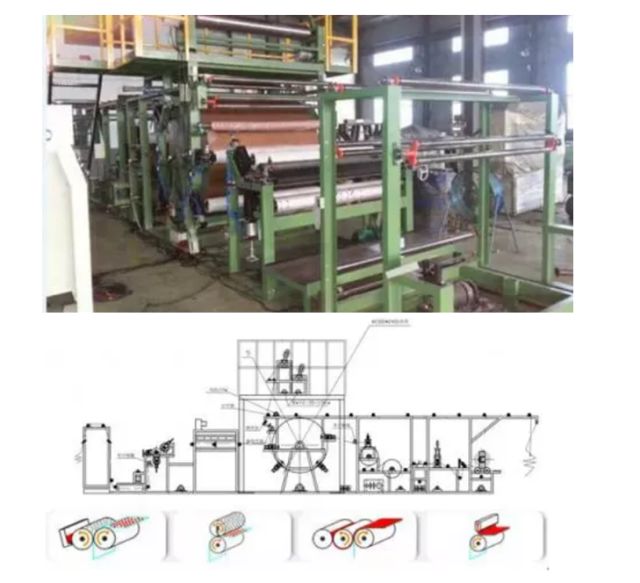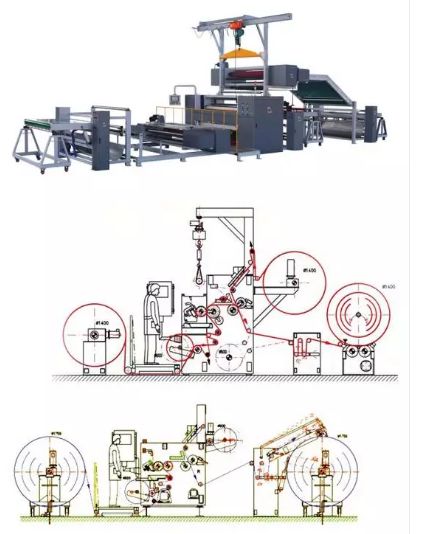Will PUR change the ecology of the composite materials circle?
Essential knowledge for clothing purchasing – composite fabrics

01
What is composite fabric?
Composite fabric is a new type of material formed by bonding one or more layers of textile materials, non-woven materials and other functional materials. Suitable for sofas, clothing and other textiles, it is one of the indispensable fabrics for people’s home life.
Composite fabric is made of microfiber through specific textile processing and unique dyeing and finishing, and then processed by “composite” equipment. The English name of composite fabric is: “Lamination Fabric” and “Soft Shell Fabric”. Because the composite fabric uses microfiber, the fabric has high cleaning ability, that is, decontamination ability.
Composite fabrics use “new synthetic fiber” high technology and new materials, and have many excellent properties (compared with ordinary synthetic fibers), such as fabrics that are clean, delicate, elegant, and warm. It has a plump appearance, is windproof, breathable, and has a certain waterproof function. Its main features are warmth and good breathability.
Another feature of this fabric is that it has good wear resistance. Microfiber fabrics are soft to the touch, breathable, and moisture-permeable, so they have obvious advantages in terms of touch and physiological comfort. Microfiber fabrics The wrinkle resistance of microfiber fabrics is poor (this is due to the soft fiber and poor elastic recovery after wrinkles); in order to overcome this shortcoming, a “composite” process is adopted, which greatly improves the shortcomings of poor wrinkle resistance of microfiber fabrics. Composite fabric is a popular outerwear fabric in Europe and America.
02
Classification of composite fabrics
According to composite materials
1, woven fabrics and knitted fabrics are composite
2. Knitted fabrics and knitted fabrics composite
3. Woven fabrics and woven fabrics composite
Divided according to the number of layers:
Three layers: Lamination with film;
Second layer: Lamination without film
Six internationally popular composite fabric techniques:
1. Hot sol powder coating Composite fabric technology
2. Hot sol paste dot composite fabric technology ★PUR
3. Hot sol powdered composite fabric technology
4. Hot sol double Point composite fabric process
5. Polyurethane spray composite fabric process
PU process equipment:
The fabric composited by polyurethane roller coating composite process is A new type of fabric developed by the market. In short, it is a fabric that combines two fabrics. In the past, the most common composite was the composite of suede fabric and wool. Nowadays, any fabric can be used to composite it together. The door width of composite fabrics is limited to the size of the two fabrics before they are combined, which can generally reach 145CM.
In traditional compounding equipment, the original glue is heated and dissolved in the solvent, the glue solution is added to the glue application tank manually, and the solvent is evaporated by hot pressing in the compounding wheel.
The glue maturation conditions are 30℃×5day, so that the solvent can evaporate to the maximum extent.

Advantages and disadvantages of PU technology:
Disadvantages:
1. The solvent is pungent and not environmentally friendly, and it is easy to produce APEO and formaldehyde
2. Impurities are easily mixed in when applied manually, and the amount of glue on the glue point is unstable
3. The amount of glue applied is relatively large Too much, it feels a bit hard.
4. Ready-made garments cannot be dry cleaned
★There are many problems with this process. If it is not a chemical fiber fabric, it is recommended not to use this process
PUR process equipment:
Use 100% solid content single-component reactive hot melt adhesive, which does not contain chemical solvents, is environmentally friendly and has no irritating smell. The machine automatically applies it and the glue tank is heated.
The maturation conditions of hot melt adhesive are 30℃ room temperature, humidity >90%, and it must be left for 72 hours to achieve the final peeling effect.
Advantages and disadvantages of PUR process:
Advantages:
1. Environmentally friendly, no odor, no formaldehyde
2. Reactive glue, glue Points are long-lasting and garments can be dry-cleaned.
3. Small amount of glue, soft feel
Disadvantages:
1. Glue quality is very important
2. Small amount of glue, If maintenance is insufficient, peeling strength will be poor
03
Common problems with composite fabrics
1. Fabric color
1. Composite process Processes such as gluing, hot pressing, and drying have an impact on the color of the fabric.
2. If the top fabric is light-colored and the base fabric is dark, the color of the base fabric will have a greater impact on the color of the base fabric.
2. Detachment/blistering after washing
Due to the poor bonding fastness of the fabric after lamination, partial detachment or blistering occurs during washing.
3. Folding and wrinkles
When the non-elastic thin fabric is used as the top fabric and the base fabric is thicker, folding and wrinkles are prone to occur
4 .Washed bark wrinkles
When composite fabrics with a shrinkage difference of more than 3 points between the top fabric and the base fabric and a large difference in fabric thickness are washed, a bark wrinkle effect will occur on the thin fabric surface due to the difference in shrinkage.
5. Transparent glue
Woven fabrics are light-colored and thin, and glue spots can be seen on the cloth surface after the glue is matured.
6. Glue overflow
For fabrics with sparse texture and hard feel, it is easy for glue to seep out of the fabric surface.
7. The colored yarns of light-colored fabrics are highlighted due to compounding
White fabrics, especially white woolen materials, after compounding, due to the background of the base fabric, colored yarns in the white fabrics, etc.Fabric flaws are particularly prominent.
8. Composite entrained foreign matter
It is easy for impurities (such as hair, fiber scraps and other impurities) to fly into the composite glue during the PU composite production process. The entrained foreign matter will appear when laminating light-colored fabrics. Now on canvas.
9. Curling
Elastic fabric and non-elastic fabric are bonded together and the elastic fabric is thicker than the non-elastic fabric. During the composite production process, if the surface tension of the cloth is not well controlled, it will easily roll. edge phenomenon.
10. Formaldehyde problem
Because glue containing formaldehyde is used in the composite process, formaldehyde exceeding the standard will occur during testing.
04
Pay attention to the problem
Noodle and base cloth selection:
Best: the door is consistent, the shrinkage rate is consistent, the shrinkage rate is consistent, the shrinkage rate is consistent, the contraction rate Consistent thickness
1. The difference in shrinkage is greater than 3 points. The fabric with a small shrinkage should be thicker than the fabric with a large shrinkage (determined by the specific sample).
2. The fabric before lamination should not be subjected to hydrophobic softening treatment, especially fluorine-containing waterproofing treatment.
3. Try to avoid choosing white fabrics, especially white woolen fabrics, for lamination
4. High-value fabrics have narrower widths than low-value fabrics, and the difference in width cannot exceed 10CM. , otherwise the waste will be greater.
5. Try not to use fabrics with production risks for lamination.
Composite process:
1. For fabrics that require dry cleaning, the PUR process should be selected for lamination.
2. When laminating, the fabrics should be aligned with the silk strands to avoid skewed wefts, twisting of straight yarns, etc.
3. Sufficient maintenance treatment in the mid-term, otherwise the peeling strength will be poor.
4. Composite processing seems simple, but it has a lot to do with the experience, technology, and operational proficiency of the composite factory.
5. The composite fabric cannot be recombined. Even if it is peeled off, it will affect the yarn of the fabric, make it hard to the touch, and the yarn is easily punctured by needles.
6. Non-elastic high-density woven fabrics need to be compounded with film, otherwise the fastness will be poor





